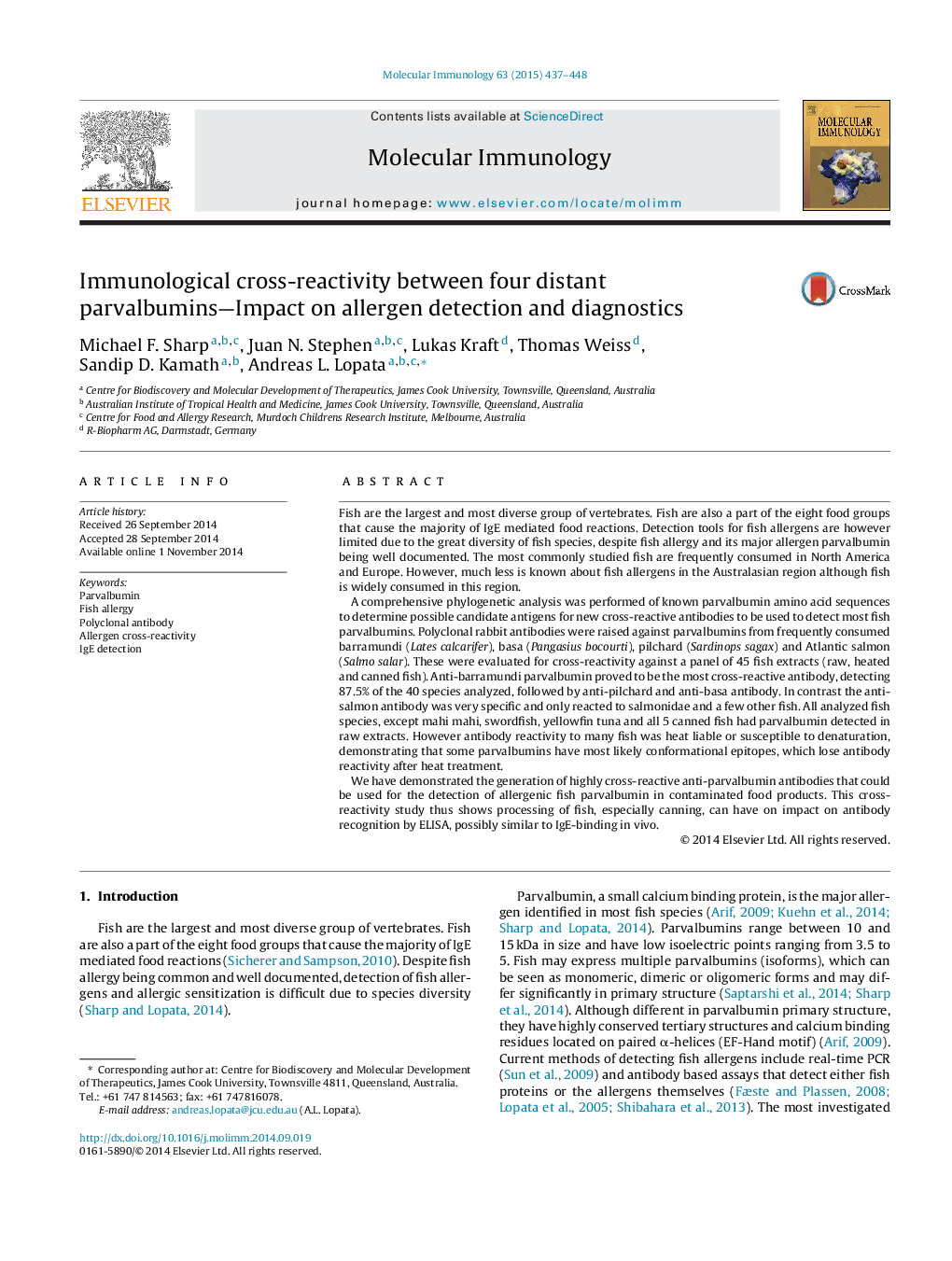| کد مقاله | کد نشریه | سال انتشار | مقاله انگلیسی | نسخه تمام متن |
|---|---|---|---|---|
| 2830730 | 1163750 | 2015 | 12 صفحه PDF | دانلود رایگان |
• Four cross-reactive anti-fish parvalbumin antibodies were generated and analyzed.
• The most cross-reactive antibody was the anti-barramundi parvalbumin antibody.
• The most specific was the anti-salmon parvalbumin antibody.
• Overall, parvalbumin of 92.5% of the analyzed fish species was detected.
Fish are the largest and most diverse group of vertebrates. Fish are also a part of the eight food groups that cause the majority of IgE mediated food reactions. Detection tools for fish allergens are however limited due to the great diversity of fish species, despite fish allergy and its major allergen parvalbumin being well documented. The most commonly studied fish are frequently consumed in North America and Europe. However, much less is known about fish allergens in the Australasian region although fish is widely consumed in this region.A comprehensive phylogenetic analysis was performed of known parvalbumin amino acid sequences to determine possible candidate antigens for new cross-reactive antibodies to be used to detect most fish parvalbumins. Polyclonal rabbit antibodies were raised against parvalbumins from frequently consumed barramundi (Lates calcarifer), basa (Pangasius bocourti), pilchard (Sardinops sagax) and Atlantic salmon (Salmo salar). These were evaluated for cross-reactivity against a panel of 45 fish extracts (raw, heated and canned fish). Anti-barramundi parvalbumin proved to be the most cross-reactive antibody, detecting 87.5% of the 40 species analyzed, followed by anti-pilchard and anti-basa antibody. In contrast the anti-salmon antibody was very specific and only reacted to salmonidae and a few other fish. All analyzed fish species, except mahi mahi, swordfish, yellowfin tuna and all 5 canned fish had parvalbumin detected in raw extracts. However antibody reactivity to many fish was heat liable or susceptible to denaturation, demonstrating that some parvalbumins have most likely conformational epitopes, which lose antibody reactivity after heat treatment.We have demonstrated the generation of highly cross-reactive anti-parvalbumin antibodies that could be used for the detection of allergenic fish parvalbumin in contaminated food products. This cross-reactivity study thus shows processing of fish, especially canning, can have on impact on antibody recognition by ELISA, possibly similar to IgE-binding in vivo.
Journal: Molecular Immunology - Volume 63, Issue 2, February 2015, Pages 437–448
